- Home
- Fishing Rigs
- Saltwater Fishing Rigs
The Best Saltwater Fishing Rigs for Boat Fishing
Unless you're a totally dedicated lure fisherman you're going to need some saltwater fishing rigs for boat fishing - and there are a few to choose from. In fact, although they continue to be refined, I'd bet there isn't a bottom fishing scenario for which a suitable rig hasn't been designed.
Tying boat fishing rigs is a straightforward affair, providing you follow a few simple rules and take care with the knots.
Hook patterns and sizes will depend on the type of bait you intend to use, and the species and size of fish you hope to catch.
Swivels must be up to the task expected of them; I would always go for crane swivels rather than the cheaper but less reliable barrel swivels.
If you're making up bottom rigs for large fish like conger eels that spin like ballet dancers on steroids, then ball-bearing swivels are what you need.
The rig body line and hook snoods will most likely be nylon monofilament if you buy your bottom fishing rigs already made up, but if you tie them yourself you've got the option of using the near-invisible fluorocarbon.
Ready-made saltwater fishing rigs are relatively cheap to buy, so instead of making your own, you may decide to stock up from a trusted on-line supplier.
Making Saltwater Fishing Rigs the Easy Way
But the best route in my view - and I don't see it as cheating - is to get yourself a kit of rigging components (hooks, beads, swivels, fluorocarbon line etc), buy a few professionally made-up bottom fishing rigs to use as patterns, and simply copy them.
The ones shown here by Greys Sea Rigs have reputation for good quality, and a real plus this, each one has a fully dimensioned sketch of the rig in the packet.
The Flowing Trace; Basic Version
|
This is the simplest of all saltwater fishing rigs for boat anglers wanting to place their bait on the seabed. The lead weight is attached to the link swivel which is free to run between the 2 other swivels which should be around 3 to 4 feet apart. The plastic bead is there to protect the knot from the link swivel. The hook length is normally between 3 and 6 feet long. Swivels are a vital part of any rig; it pays to use good quality ones. |
The Flowing Trace; Wishbone Version
|
The wishbone rig is a two hook rig for presenting two separate baits. It can be incorporated into any bottom fishing rig, and are often used for flatfish and uptide ledgering rigs. This one sports a plastic link slider, which is offers less friction to a biting fish than a plain link swivel. As most bottom feeding fish rely on scent to lead them to their dinner, having two baits exuding all the right juices can be no bad thing. |
The Flowing Trace; Flatfish Wishbone Rig
|
Along with scent, flatfish are known to be attracted by colour which is why this rig sports a number of brightly coloured attractor beads next to each hook. But if the water is deep, dark and murky don't expect the bling to contribute much. For more about this, and in particular flounder fishing, click here... |
The Double Hook Flapper Rig: '2 Up'
|
This is a 'two up' version of the flapper rig, meaning that both baits will be presented above seabed, paternoster style. Neither hook snood should be longer than the distance between the two attachment swivels. Vital, this, or the snoods are likely to tangle together. Similarly, the lower snood isn't long enough to tangle around the link clip. Typically you'll use this rig when boat fishing for cod, pollack, bream, whiting and dogfish. But I'm not sure I know anyone who intentionally fishes for dogfish... |
|
The hook snoods on these saltwater fishing rigs are best attached as shown here, crimped in place between two beads. Alternatively you could use a 3-way swivel or a blood loop. |
The Double Hook Flapper Rig; 1 Up, 1 Down
|
In this version of the flapper rig the lower hook snood is longer than the distance between its attachment point and the lead link. This ensures that the lower bait will be presented on the seabed, and the other a short distance above it - hence 'one up' and 'one down'. As with the 'two up' version you'd typically use this rig when boat fishing for cod, pollack, bream, whiting and dogfish. Additionally, depending on the bait and hook size, you could be in line for a flatfish or a ray. But it is a rig prone to tangling on the drop, so lower it slowly allowing the tide to stream out the lower snood away from the main reel line. |
The Uptide Rigs
|
As its name suggests, this saltwater fishing rig is intended to be cast uptide and away from the boat where the fish won't be spooked by the anchored boat lurking above them.
A bow of slack line is allowed to form between the spiked lead and the rod tip, leaving the terminal tackle streaming downtide of the lead. The plastic boom, to which the spiked 'breakaway' lead is attached, ensures that the hook length is kept clear of the bowed main line. When a fish takes the bait, the lead breaks out of its hold on the seabed and the whole shebang trundles off downtide. The line goes slack, the rod tip springs free of the load applied by the tide. Time to harden up and - Strike! This is a favourite rig for boat anglers targeting winter cod in the relatively shallow and cold waters of the North Sea. Brrr! |
The Uptide Rigs; Pennel and Wishbone Versions
|
The two-hook pennel rigged version is for presenting 'awkward' baits like a lengthy lugworm, king ragworm, whole squid or a fillet of mackerel. Unlike the pennel rig, where both hooks are in the same bait, the wishbone rig is for presenting two separate baits - perhaps a main course and a dessert? |
Uptide Pennel Rig |
Uptide Wishbone Rig |
Recent Articles
-
Sea Fishing Rods and Reels Must Be Compatible for a Balanced Outfit
Mar 08, 21 08:30 AM
A quality reel fitted to a quality rod doesn't necessarily make it a quality outfit. Your fishing rods and reels have to be properly matched if you're to get the best out of them, and here’s how -
Essential Lure Fishing Tips That All Saltwater Anglers Should Know
Mar 08, 21 04:51 AM
Which single lure fishing tip applies to trolling, jigging, baitcasting, spinning, fly fishing and any other branch of lure fishing? Well, it is the one at the top of this list -
Vital Jig Fishing Tips That You Really Cannot Afford To Miss!
Mar 07, 21 10:20 AM
Essential jig fishing tips to help you select the right lure for successful jig fishing, together with the techniques required to get the most out of your jig fishing outfit
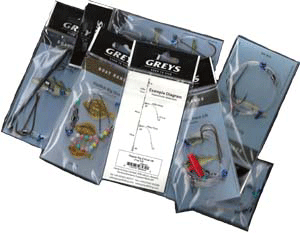
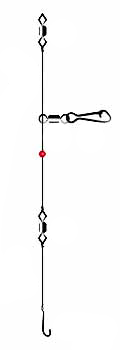
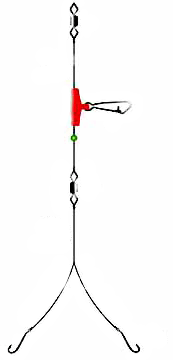
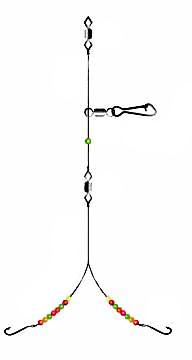
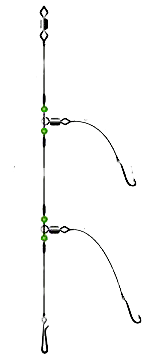
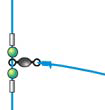
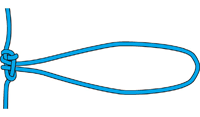
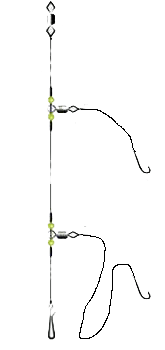
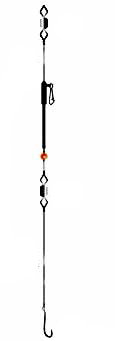

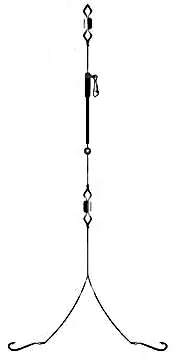
























New! Comments
Have your say about what you've just read! Leave me a comment in the box below.